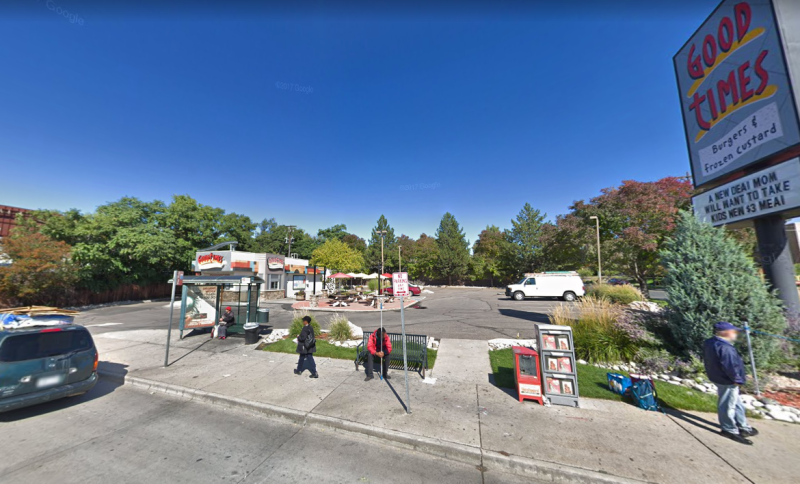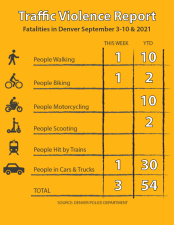Denver City Council May Ban Drive-Throughs Near Rail Stations
The proposal would prevent new drive-throughs from degrading walking access to train stations, but it wouldn't apply to bus stops.

Transit works best when people can walk to it. And walking to transit is a lot better when you don’t have to deal with drive-throughs, where drivers can cut across your path at any moment.
Denver has more than 175 drive-through businesses, and each one contributes to a less walkable city by disrupting the pedestrian environment. Later this year, Denver City Council members will have a chance to prevent more drive-throughs from popping up near RTD stations.
The Denver Department of Community Planning and Development recommended Tuesday that the zoning code ban new drive-throughs within a quarter-mile of rail stations in “urban” areas.
The zoning change would affect “areas of our city that are really intended to be the most vibrant, the most pedestrian-friendly, the most active,” Senior City Planner Sara White told council members yesterday. “The thought here is that… drive-throughs would not contribute to that desired character, particularly from a pedestrian activity standpoint.”
Council Member Kendra Black, who wants to make her district more walkable around its RTD stations, prompted the discussion within CPD.
New drive-throughs would still be permitted around stations in areas zoned “suburban,” which include pockets around the Alameda, Colorado, Yale, and Southmoor stations. But a more stringent building standard would apply to these drive-throughs — no drive-through lanes allowed between the building and the sidewalk, for example.
The zoning change also fails to recognize the importance of good pedestrian access to bus stops. In 2016 RTD carried almost twice as many bus riders as rail riders. Council Member Jolon Clark said it would be “backwards” to think people only walk to rail stations, and that the planning department should consider regulating drive-throughs on high-frequency bus routes, like Broadway and Colfax Avenue.
“I think we are struggling as a city to recognize buses, especially where there are dedicated lanes, future [bus rapid transit], and high-frequencies,” Clark said.
White called the new rules around rail stations “a first step” and that expanding them to bus stops is “definitely something that down the road we could consider.”
The amendment will go to the Planning Board for a public hearing on March 21. City Council will vote on the change in May.


